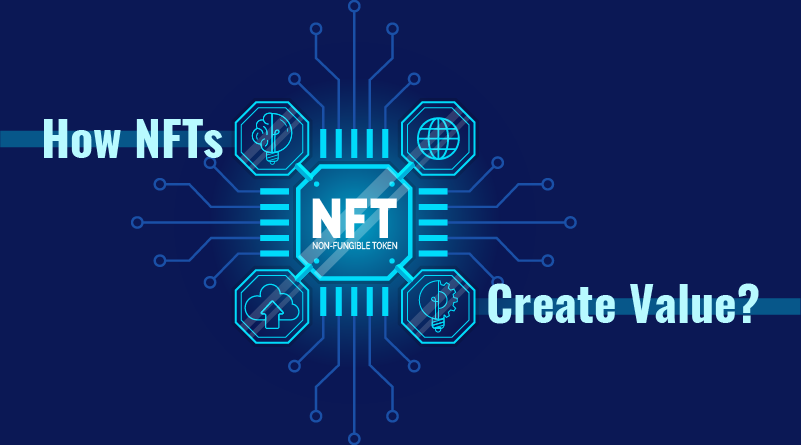Did cryptocurrency boggle your mind and you struggled to demystify the world of Bitcoins and Dogecoins? Then get ready for some more action as it is about to get even more complex now, a new digital money (or an alternative to money) is trending – NFT. NFT stands for non-fungible token and is a digital asset that represents objects of the real world like music, art, videos, or in-game items. They are bought and sold online, most commonly with cryptocurrency, and the underlying software used to encode them is similar to cryptos.
Although NFTs gained exponential popularity recently, they have existed since 2014. Of late they have become a very popular way of buying and selling digital art. CryptoPunks, the first marketplace for NFTs for digital artwork was established in 2017 and was launched on Ethereum blockchain. Since November 2017, almost $174 million has been spent on NFT trades.
NFTs have a limited run and thus create digital scarcity. This is in contrast to the principle of digital creations, which has an almost infinite supply.
You might be wondering when anyone can view these artworks why are people willing to pay millions for them? Well, this is because with NFTs the buyer owns the original artwork along with a built-in authentication to serve as proof of ownership. Collectors or buyers enjoy the digital bragging rights that they get with this transaction and value it a lot more than the item or art piece itself.
Some NFTs that broke all records:
- Hashmask #9939 sold for $844,216.
- Every day – The first 5000 days, Beeple sold for $69 million.
- The source code for the World Wide Web sold for $5.4 million.
How Do NFTs Work?
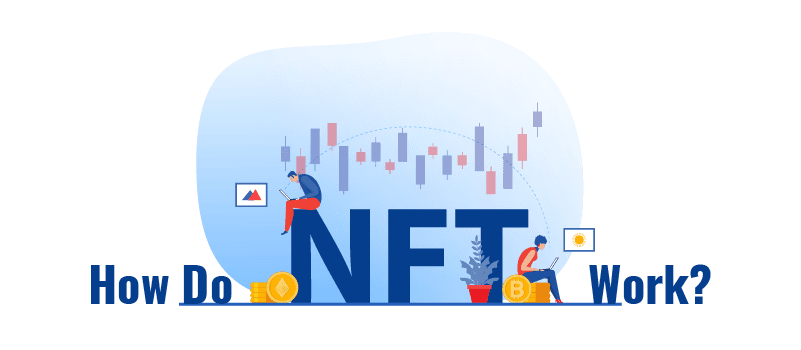
NFTs work on the baseline of the blockchain system. Blockchain is distributed ledger which records a series of transactions. You will most commonly hear about blockchains in cryptocurrency parlance. NFT gets created or minted from digital artwork or products which represent intangible and tangible items like art, videos, music, collectibles, video game skins, or virtual avatars. Even tweets count as NFTs. Jack Dorsey, co-founder of Twitter sold his first tweet for more than $2.9 million.
NFTs are essentially like collector’s items only in the digital form. Instead of hanging an actual oil painting on the wall, the buyer owns a digital file instead.
The buyer gets exclusive ownership rights as the NFT can have only one owner at a time. The unique data associated with NFTs makes the verification of ownership easy and the transfer of tokens from one owner to another becomes seamless. The owner or the creator can embed specific information in the NFT. For example, artists can add their signatures in the NFT metadata itself.
What Makes NFT Valuable?
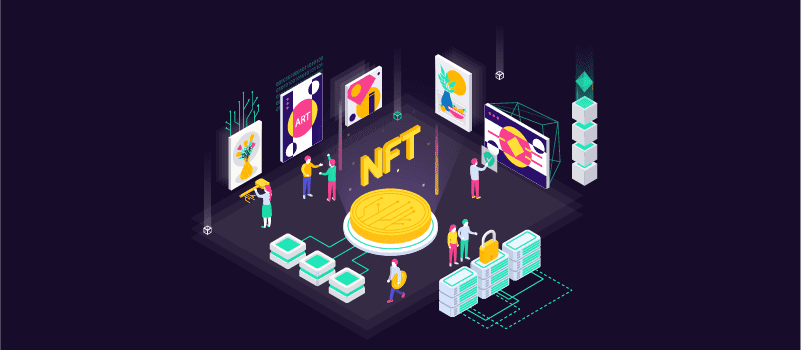
NFTs and the entire ecosystem provide an opportunity to buy, sell, trade, and collect digital assets. A scarcity of supply gets created and that offers a new revenue stream to the artists. NFTs can easily be transferred and are inherently scarce and that is what creates value. Had it not been for these two attributes, the NFTs would have been worthless.
The most notable quality of NFTs is that they cannot be split or divided. This makes them unique and valuable, especially in the world of cryptocurrencies, where the unit is divisible. This enables the NFTs to represent abstract assets like the artwork too.
The value of non-fungible tokens is determined by a multitude of factors, some of them include:
- Limited Supply: A limited supply creates scarcity which in turn guarantees value for each product. It gives the buyer a sense of pride in owning a rare product.
- Collectibles: Some NFTs are exclusively created to be collectibles. If an NFT is a collectible it becomes harder to get it. For example, an NFT CryptoKitty can be bred only with other CryptoKitties. So if you own one of your digital wallets and want to have another one, you will have to convince another collector.
- No Intermediaries: If a user wants to trade on assets they just initiate a transfer. The owner can then choose between either accepting or rejecting the asset. Thus, the transactions do not require a broker or an intermediary, this speeds up the process.
- Control Over Circulation: The artists control the addition of new NFTs for circulation. If a particular NFT is deemed to be rare, hard to buy then it becomes valuable to the community.
How To Buy Non-Fungible Token?
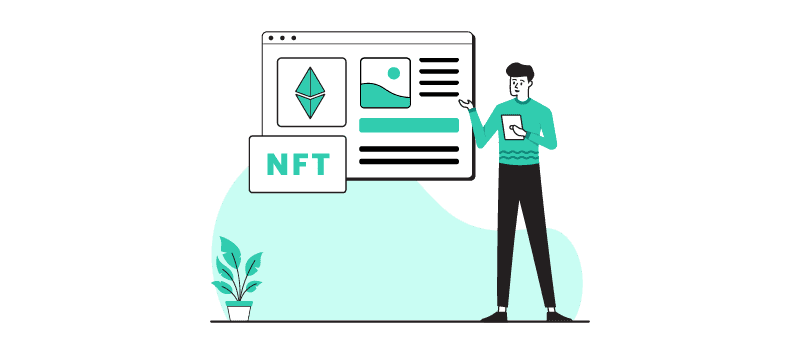
If you are excited about climbing on the NFT bandwagon, here is what you need to do!
To start with, you need a digital wallet that allows storing of NFTs and cryptocurrencies. You will need to purchase some cryptocurrency, like Ethereum. The currency will depend on what currency your NFT seller accepts. On platforms like Coinbase, eToro, PayPal cryptos can be bought using a credit card. You must keep the fees in mind as most of the platforms charge about a percentage of the transaction value as the fees.
Once your wallet is set up and you have added funds, there are multiple NFT marketplaces where you can buy the NFTs:
- Rarible
- OpenSea.io
- Foundation
Related: How Cryptocurrency Prices Impact Domain Names?
NFTs As Of Today And Where Are They Headed?
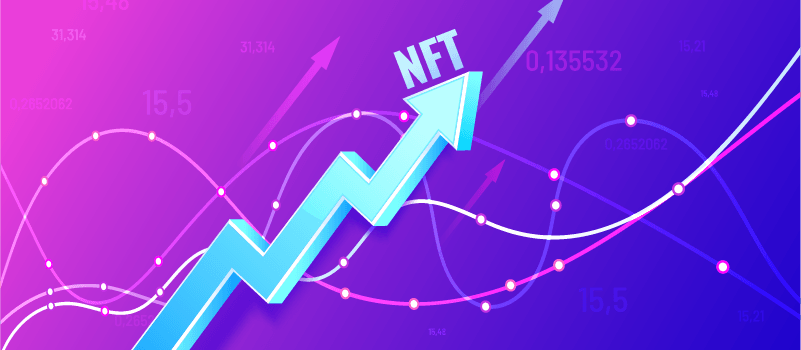
NFTs have undergone a drastic change since their inception. However, the core premise remains the same to date – NFT still represents a unique item, instead of representing a fungible token. Fungibility is often used in the parlance of assets that are interchangeable or replaceable. Token denotes a medium of attesting verifiable digital ownership of an asset. Thus, NFT is similar to a smart contract for an asset or item that is non-replicable or unique.
Historically digital art and artists have been shackled with limited ability to make profits. With NFTs, the whole game has changed as NFTs enable artists to earn not just a living but record profits from their artwork.
In today’s time, it is not just traditional art masterpieces that are in the NFT game but tweets, video clips, memes are also selling as NFTs. Celebrities like Paris Hilton, Simone Biles, and Edward Snowden have recently started using and have also launched NFTs. Big Brands like Chairman and Taco Bell are also in the race as they launched a collection of virtual toilet paper and taco artwork.
NFTs are all set to become mainstream if they get established as monetization standards for digital content which is otherwise freely available.
There are a few key critical roadblocks and risks that need to be mitigated before NFTs become mainstream and ubiquitous. NFTs have been vulnerable to scammers, imposters, and hackers who want to exploit the security loopholes. Milos Rajkovic, a Serbian artist found 122 of his artwork available for sale on a platform, without his consent. Issuers and marketplaces and the technology will need to address these vulnerabilities, ownership, and copyright issues as NFTs mature further.
The environmental impact of the mining process of NFT is also an area of concern as the electricity consumed in the mining process is huge. In the non-NFT space, sustainable mining methods have emerged. However, for NFTs, this remains a big area of opportunity and improvement.
NFT’s pyramid scheme-like structure also faces criticism as many large-scale investors are also heavily invested in crypto which gives them double wins. This makes the ecosystem less conducive for smaller NFT players. Such a conflict of interest calls for more control and regulations.
Should You Be Buying NFTs?

As NFTs make news and almost all social media platforms are strewn with posts about people making millions with NFT transactions, it is only natural to get attracted to this new digital asset.
However, just because it is trending and you can buy NFTs, does not mean you should buy them.
NFTs come with associated risks as their future is still uncertain and there is not enough historical data to predict their performance. Since the NFTs are new, it is good to play safe by investing a small amount.
The Takeaway!
In nutshell, the decision to invest in NFTs is completely a personal decision. If you have some spare money and if a particular artwork holds meaning for you, you may consider buying some assets. Before you get into the NFT world, keep in mind that the value completely depends on what the other party is willing to pay for it. Therefore, the price is driven by demand rather than economical or technical attributes.
Capital gain taxes are also applicable on NFTs, just like in the case of stocks. Do keep in mind that the cryptocurrencies that you use to buy NFTs may also get taxed if their value has increased. Before you add NFTs to your portfolio, you may want to consult a tax professional.
Like any other investment instrument, do your research, understand all the potential risks and when you decide to take the plunge do so with caution.
As NFTs mature and grow in popularity it will be an interesting story that emerges around the evolution of this very exciting technology.

